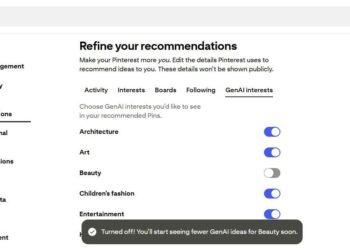Select Language:
Scopophobia is the fear of security cameras—the worry that someone is always watching behind their tiny, beady lenses. If this fears you, you’re not alone; surveys indicate that about one in three people are concerned that their smart home could be targeted by malicious hackers. This concern has been around since the early days of smart home technology—and for good reason.
History shows that cybercriminals have previously exploited connected home systems. In 2021, South Korea saw one of the boldest smart home breaches on record, with over 700 apartments compromised digitally. More recently, in 2023, a Ring camera was hacked and used to make inappropriate comments toward the owner.
Such incidents were more common during the initial stages of smart home tech adoption. Over the years, companies like Google and Ring have prioritized security in their latest products. While the kind of hacking shown in 2022’s Scream is technically feasible, it remains highly unlikely.
However, a new threat vector has emerged with the advent of artificial intelligence. Recently, researchers demonstrated how Google Gemini could be exploited to take control of smart home devices through malicious code embedded in a Google Calendar invite.
This type of attack, known as “promptware,” raises concerns about AI’s role in compromising smart home security. Nonetheless, many of these worries are exaggerated. Is it a real risk? Yes. Is it a common one? Definitely not. If such an attack were to happen to you, your luck might just be extraordinary.
This method involves a “prompt-injection attack,” where malicious instructions are hidden within a routine Google Calendar alert disguised as a simple invitation. The intent was for these instructions to activate when a user asked Gemini to summarize their schedule, responding with something mundane like “thanks,” which would then trigger the malicious code.
Once triggered, these commands could manipulate various devices within the home. This was mainly a proof of concept; a real-world attack could be less obvious but might access cameras, speakers, or even open a backdoor to information stored on the devices.
What makes promptware particularly dangerous is that traditional security measures like firewalls and antivirus software generally can’t stop it. These attacks exploit automation and social engineering, which existing security tools aren’t designed to combat.
Social engineering has become a significant threat in recent years. For those unfamiliar, it involves deceiving individuals into sharing private or personal information. For example, you might receive a friend request on social media from a fake profile—an initial step meant to build trust before exploiting the target. Cybercriminals often use these tactics to target vulnerable individuals, taking advantage of the internet’s disconnected nature.
While using AI tools to control your smart home offers convenience, you can bolster your security by limiting AI agents’ access to sensitive controls and personal calendars. Experts recommend restricting their permissions to minimize potential risks.
As for the likelihood of your smart home being hacked, most attempts are not actual hacks—they’re phishing scams or other lower-level breaches. Having your passwords stolen and misused isn’t typically hacking in the truest sense. The majority of cybercriminals aim to steal personal data for identity theft or financial fraud, often selling this information on the black market.
Breaking into a well-secured smart home requires significant effort, especially as device security continues to improve. Turning lights on or off remotely is more of a juvenile prank than a serious threat, and unlocking someone’s front door through a smart device generally isn’t a concern for the average user.
If you’re affluent living in a large home, the risk of targeted theft might be slightly higher. However, most burglaries—around 41%—are crimes of opportunity, with intruders tending to target homes near their own or those with obvious signs of wealth. Most criminals aren’t interested in homes that aren’t visibly displaying valuables, so keeping a modest profile helps.
To reduce risk, avoid displaying large purchases or leaving valuables in plain sight. Additionally, a solid security system can be an effective deterrent; about half of burglars say they’d be discouraged by a home alarm. While nothing can stop a determined intruder who chooses to force entry, the combination of security measures and smart home devices can significantly reduce the likelihood of a break-in.
Overall, when configured and managed properly, smart home technology tends to enhance home security rather than pose new threats.







